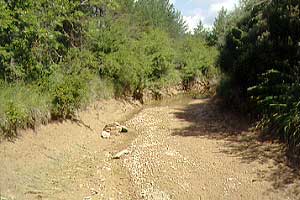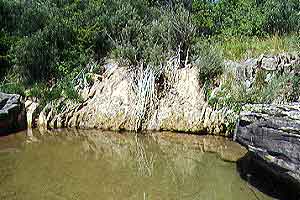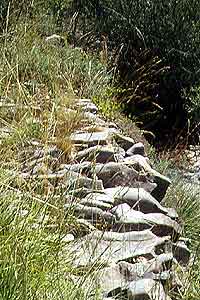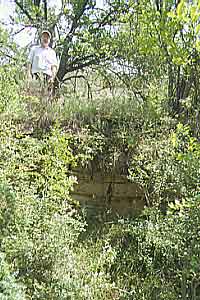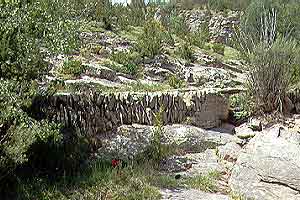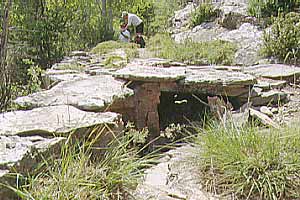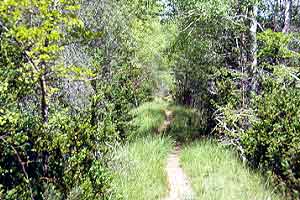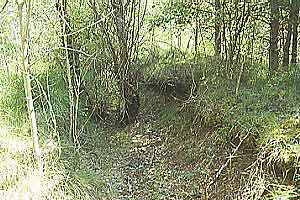Path: Introduction -
Visit the mills; catalogue - Letosa

Mills in Altoaragón - harinero
Letosa

Letosa is
situated deep in the Parque de la Sierra de Guara. From L'Ainsa drive south to Guaso and then until Arcusa. After Arcusa you'll pass the
branch towards Mondot and soon reach the crossroads where Paúles
is signposted. Turn right and at the first houses of Paúles again right towards
Las Bellostas. You'll pass the Molino de Pedro Buil, the Bordas de Sarsa da Surta, the (invisible) Casas del Gallinero. The road goes uphill, turns right
and becomes level again. That's the point where you are crossing the meridian of Greenwich, thus leaving the eastern hemisphere. Look for a cart track leaving the road
and going uphill. At the same spot is a small place where you can park the car. Make sure to have a map and sufficient water with you. The mill is about a two and a half hour walk away. This is also an excellent walk for butterfly enthousiasts and plant lovers.
Pictures: 30.vii.2004

